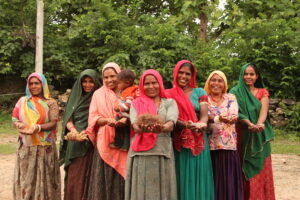In Drought-Hit Karur, One Woman Builds A Climate-Resilient Food Forest
As climate change alters agriculture and the lives of people, women like Saroja Kumar lead efforts to craft resilience solutions such as food forests
- Archita Raghu
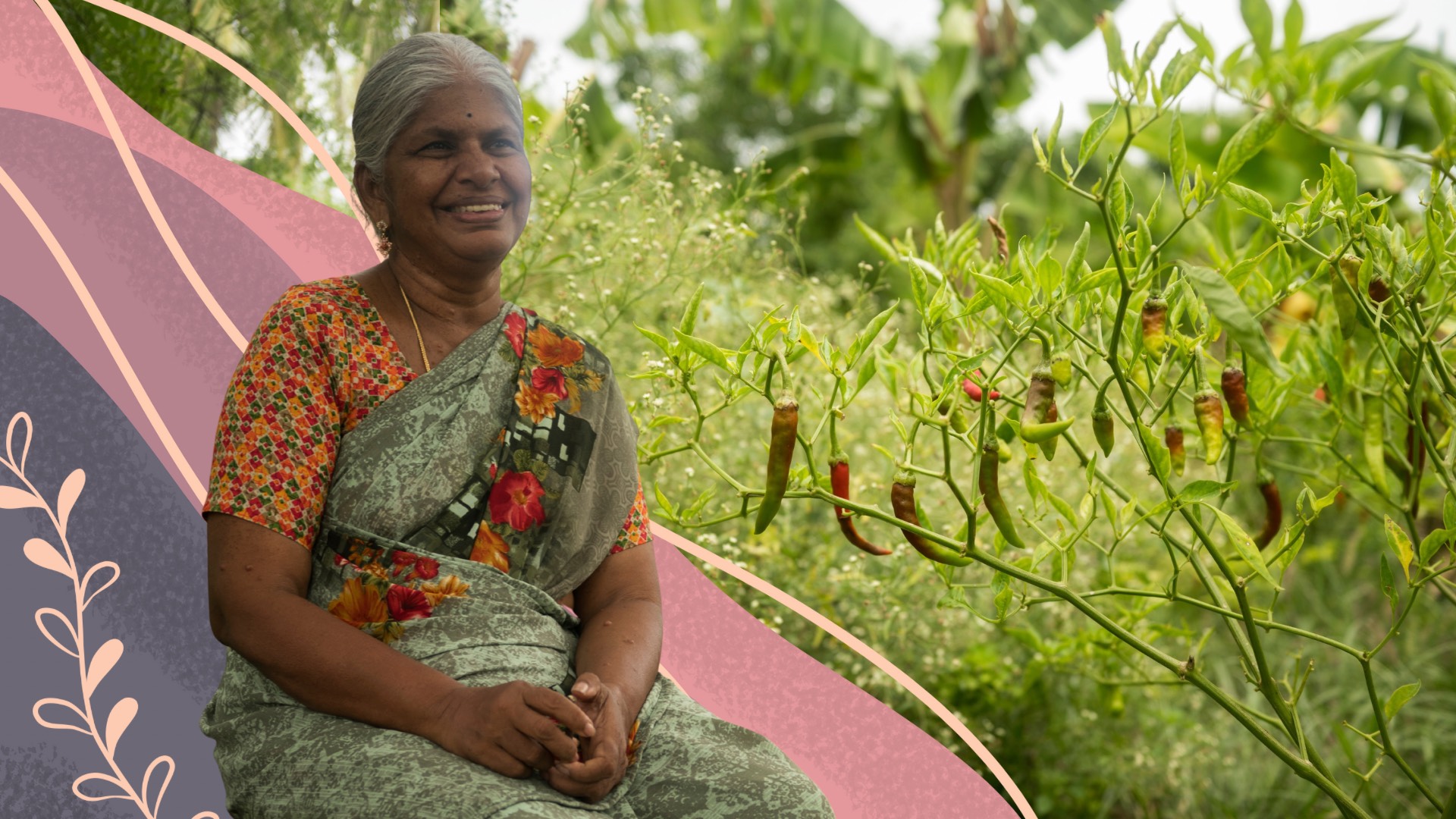
Amid the rustling leaves, calls of stealthy peacocks and chirping insects, Saroja Kumar drags the end of a large, dried coconut tree branch into the mouth of a forest in Karur. Past the lush shrubs and brinjal plant, curry leaf plant, and fig tree varieties, she places it below a murungakkai (drumstick) tree. “This helps hold water, protects the soil from harsh sunlight,” she says.
Underneath the soil, there’s a whole ecosystem that enriches it. “Erambugalum karaiyagalum ennudaya nelithil oyramal uzhaithu kondu irukindra (ants and termites work tirelessly on my land),” says the 58-year-old, quoting Japanese farmer and philosopher Masanobu Fukuoka. She brings all the way to Karur a page from Fukoka’s book One-Straw Revolution, a radical manifesto that marks a shift in how we understand farming and food systems.
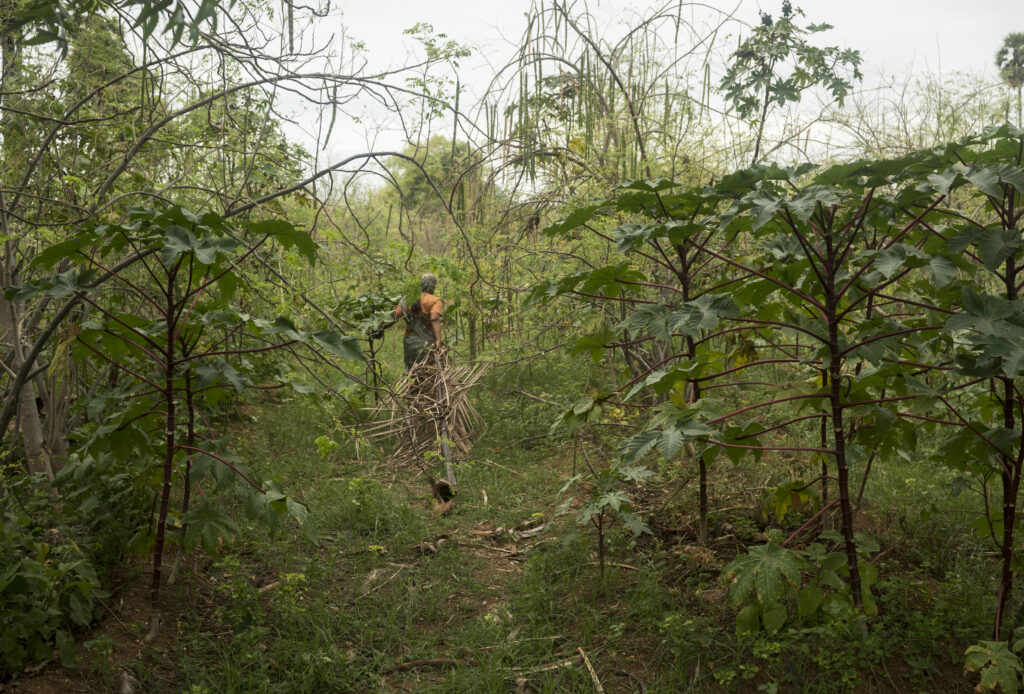
Welcome to Saroja’s food forest– Nandhavanam – in Lingamanaickenpatti village of Karur district in central Tamil Nadu. It is 9 am and the air feels cooler as we approach the woods. In an otherwise hot Karur, this place is evocative of a picturesque postcard out of Ooty. “It’s cooler than my house, even in the summer,” she says.
In Nandhavanam, spread across more than 10 acres of land, Saroja has interspersed layers of trees, roots, and creepers, with focus on food crops like amla or mulberry rather than commercial cash crops like rubber or tobacco. There are 500 coconut trees, layered with 500 trees of other varieties like jamun, banana, and mulberry.
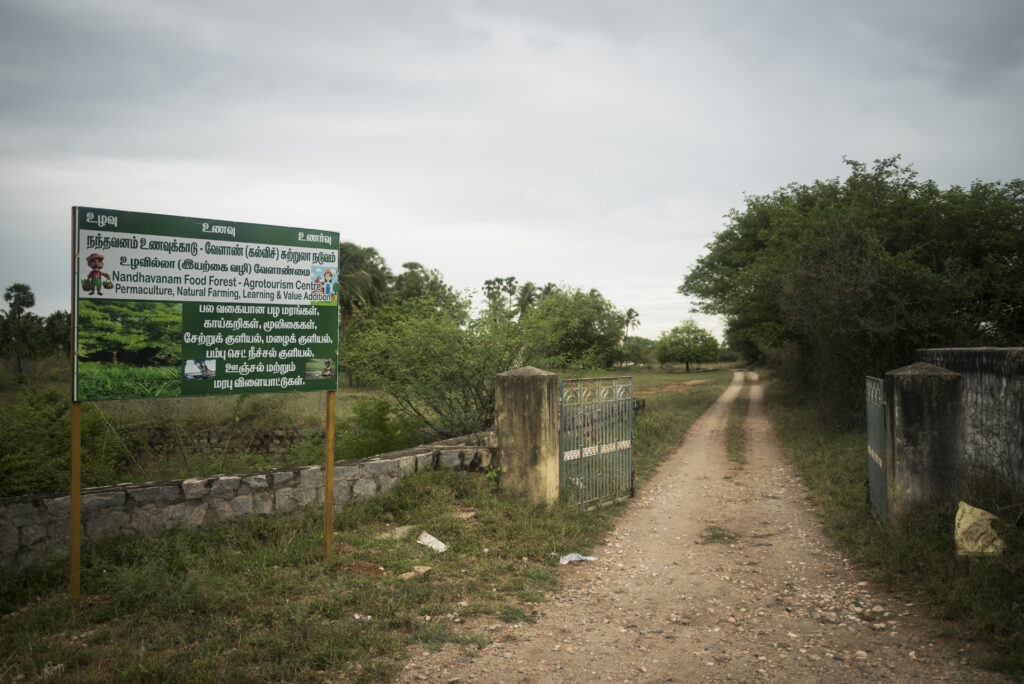
Saroja expertly trails through her green landscape. Her seasoned fingers pick out weeds, toss twigs into mulching pits, and easily place moringa seeds into the folds of her green saree.
Karur is a dry region with deficient rainfall and a forest cover of only 3%, as opposed to the stipulated 33.33%. This district witnessed a continuous increase in drought-like conditions from 2012 to 2015, prevailing over the south and eastern parts of Aravakurichi taluk, according to a study in the Indian Geographical Journal.
“Climate change is a disease on this land as ground water levels are low. I’ve seen farmers leave this profession over the years,” she told Behanbox. In Pallapatti and surrounding areas, Gounders and Naickers – classified as backward castes in Tamil Nadu– work in agriculture, and are doubly vulnerable to climate change and unseasonal rainfall, as it affects crops and incomes.
“There is an environmental crisis; we have drilled holes into the earth, stopped taking what it offers and instead take what we demand. We have killed lakes, and dumped waste and sewage in our water bodies,” she says. This is what drove her to create a food forest, bordered by towering cacti, a sharp solution towards climate change.
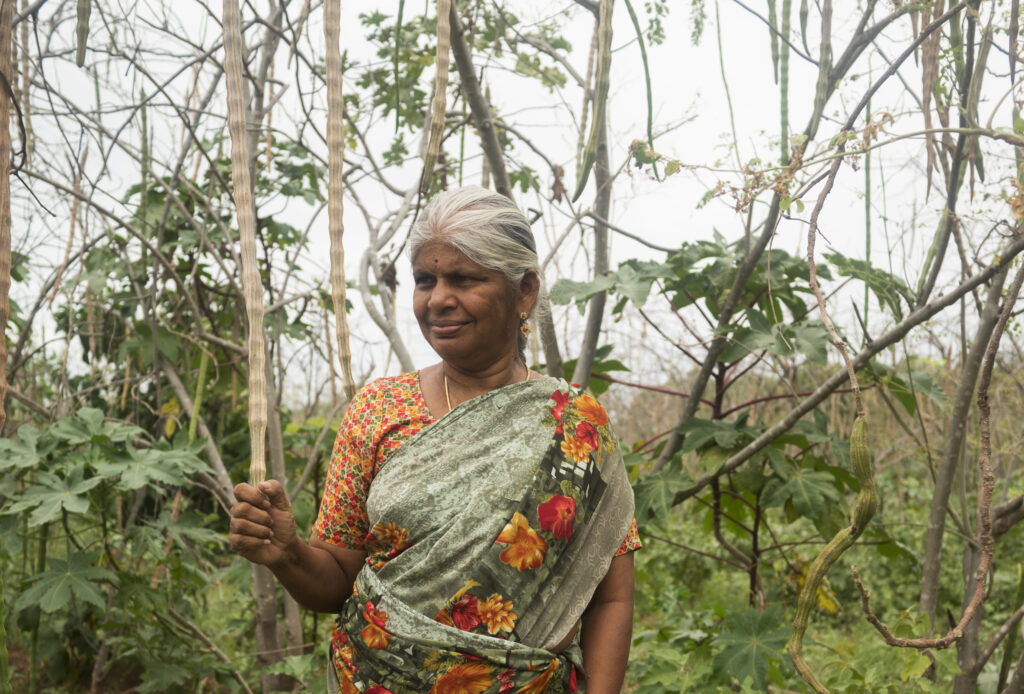
Over the past decade, Saroja has transformed this cracked land – despite its sunambu mannu (red laterite soil) and uppu thanni (brackish water), as she says – into a food and fruit forest. She harnessed organic farming techniques such as mulching, composting, while discarding machinery.
“I started with moringa and brinjal on a 50-cent land and later added more varieties. Now, there are thousands of trees. There’s an ecosystem of parrots, peacocks, forest cats, venomous snakes, caterpillars and bats. They live here now,” says the former member of Karur Moringa and Vegetable Production Farmers Producer Company Limited, a collective that makes value-added products from agricultural produce.
The Idea of Food Forests
Saroja’s day begins at 7 am with a glass of juice made with curry leaves and lime juice, her “daily dose of chlorophyll”, as she puts it.
In most farms, ploughing or loosening the soil is the first task before cultivation. But Saroja skips it because, she points out, she already has a rich ecosystem of bugs and bacteria doing the job for her.
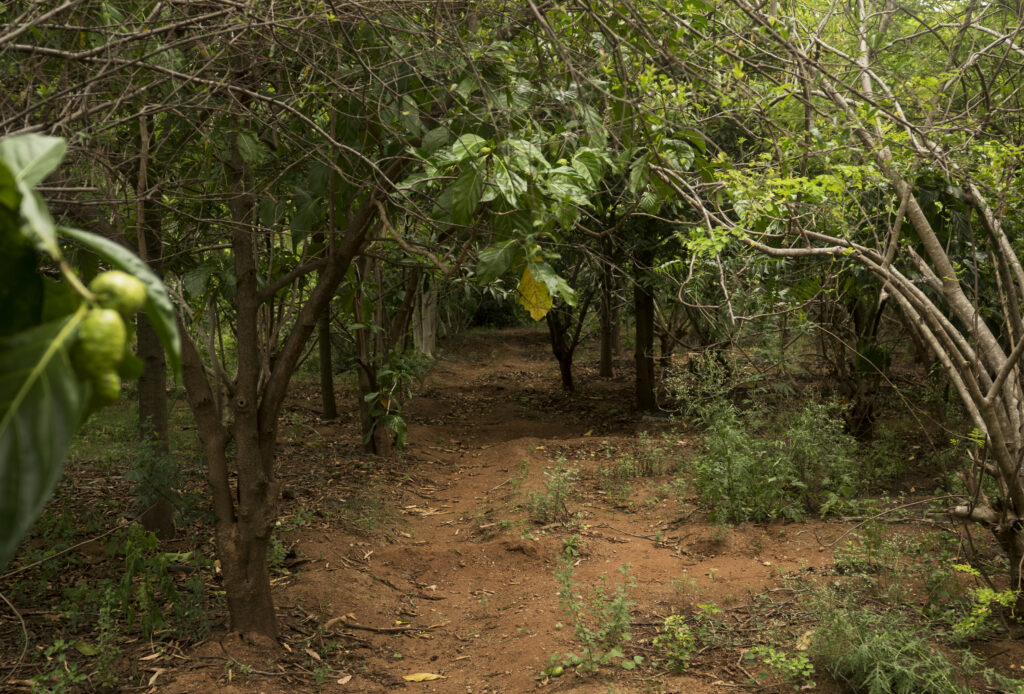
As the sprawling forest extends over acres, one portion takes around 10 days for work, including weeding, planting and harvesting. Saroja’s afternoons are spent marketing value-added products like moringa oil, fig honey, and moringa seed powder. While she does not sell many vegetables and fruits in local markets, she makes most of her income from selling her produce to the Karur Moringa and Vegetable Farmers Producer Company Limited, and a share of it goes back to the forest.
At the market, one bottle of castor oil gets her Rs 500 per litre, and moringa oil Rs 500 per 10 ml. They sell around 20 litres per month. “There’s no loss, or profit currently but I don’t bother to look at profits,” she says.
According to a study, ‘Where the wild things are: How urban foraging and food forests can contribute to sustainable cities in the Global North’, food forests increase biodiversity, mitigate climate change, and promote food security.
The concept of natural farming methods and food forests that originated in Japan, was brought in the 1980s and 90s to southern states by G Nammalvar, a proponent of organic farming. In 2009, he began Vanagam or Nammalvar Ecological Foundation that holds courses to educate collectives about organic Farming and its benefits.The idea is spreading in southern states like Tamil Nadu and Karnataka, with farmers keen on ensuring food security with diversity.
“There are also ecological and ideological dimensions. Food forests do not feed only humans, but also other creatures. This theory advocates for less spillage in drier areas”, says Israel Oliver King ED, director of biodiversity at the MS Swaminathan Research Foundation. Climate-resilient seeds that grow naturally and produce three or four layers of herbs, shrubs and trees are adaptive solutions that are at the centre of mitigation of climate risk, he adds.
Pallapatti's Green Lung
A framed photo of Nammalvar and a larger portrait of EV Ramasamy, or Thanthai Periyar’ sits at the entrance to Saroja’s home. There are traces of her magical forest in her courtyard too where red chilies and moringa seeds are drying. Her cooking is peppered with hand-picked vegetables, and castor oil from the forest, and her table has an assortment of curry leaves, drumsticks, and three varieties of brinjals.
In Pallapatti, Chennai’s activist circles and beyond, Saroja akka or Saroja ‘madam’, as she is known, is a legend. She calls herself an activist, not an entrepreneur. In the early days, her husband – a businessman – was skeptical about her working in agriculture and the idea of a food forest. He urged her to begin her forest far from the house, and far from his sight.
“This perspective persisted for a long time among other locals and my family but after a few years of protest – and once the awards started flying in – their mouths stopped,” she recalls.
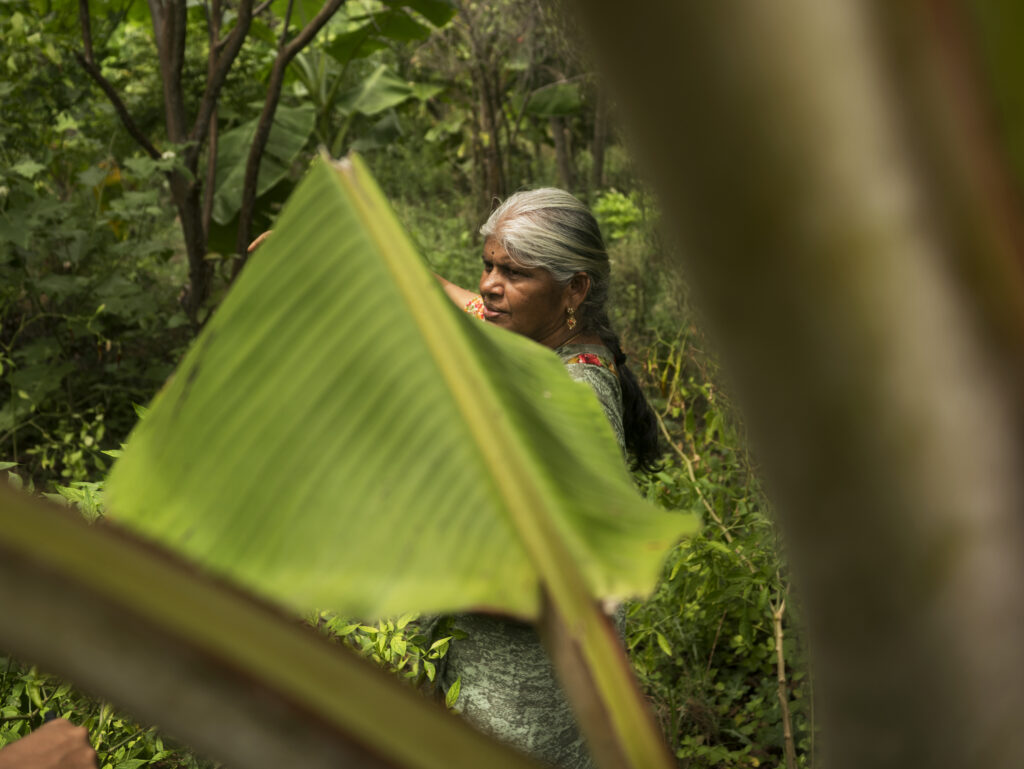
In 2011, Saroja signed up for a four-day course with Nammalvar in Vanagam, Karur, helmed by a non-profit organisation. She had grown up in a farming family, and the experience brought back memories of her mother growing crops on their land. She learned about biocide, monocotyledon (single-seed crops like maize), and dicotyledons (two-seed plants).
“This was also an awakening, politically and environmentally,” she says. She also found herself asking a host of questions – what explains violence? How does hierarchy work in landed communities? Why is there an endless need for consumption and variety?
“Everything is political, I realised. Earlier, I was a caregiver to my mother, mother-in-law, children, and many relatives. Now I am a woman and a farmer,” she says.
In 2012, Saroja began planning and manually sowing seeds on land that belongs to her husband. She started with a small investment of Rs 10,000 to Rs 15,000, mostly to buy herbicide and pay a worker to milk the cows. There was water from two wells and one nearly dry well. On many days, she had to manually haul water to her farm. Then she built a tank at a cost of Rs 3 lakh. But her biggest investment, she says, was the effort.
In the early years, growth was slow, the sales were paltry and there were several droughts such as the one in 2015. Several trees dried up. “The forest only responded much later to me,” she says.
She was often filled with doubts. She had no help with mulching and other techniques, and she recalls wondering if she should give up. But she kept returning to the forest.
Now, her 10-acre forest on the land belonging to her husband’s family, has scaled up, she has three wells and a motorised pump. Today, there is a steady stream of visitors to her home – a man from Thanjavur searching for the superfood moringa for his grandson, Europeans seeking advice on organic farming, and children on school tours.
Over the years, a flurry of awards followed – the Raindrops Charity Foundation Women Achievers Award in 2023, SDPI Nammalvar Award for her food forest, an award from Ulavan Foundation, and local awards from Pallapatti.
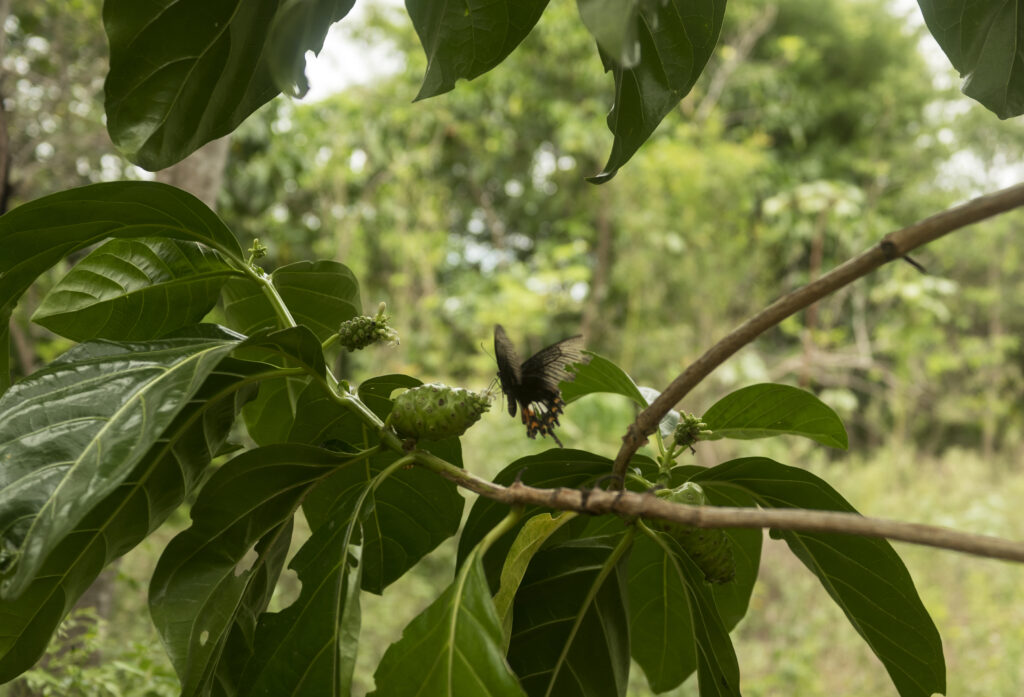
But for Saroja, the forest is about self-care. “The mud nourishes us, and my ‘colour’ changes when I work with the mud. This forest is an escape for me, it is liberation,” she says.
The Economics of The Forest
Saroja estimates that she could earn Rs 5 lakh a month from the fruits of her forest. But most of it is not sold but allowed to rot on the forest floor and nourish the soil.
After her first yield, she recalls traveling across her taluk with a bucket of tomatoes in hand, going door to door. “I was selling a kilo for Rs 10. I had to set aside Rs 300 for the van, and salaries for those who helped me pick the crops,” she says, calculating her loss at Rs 200-300.
Farming practices are governed by the idea of profit and raising crops in demand. Drumstick seeds were rare once and sold for Rs 800 a kilo. But with its reputation as a superfood growing, corporations have flooded the market. “Now it doesn’t even sell for Rs 100 a kilo. This is what happens when corporations push for monocropping, which drains the soil,” she says.
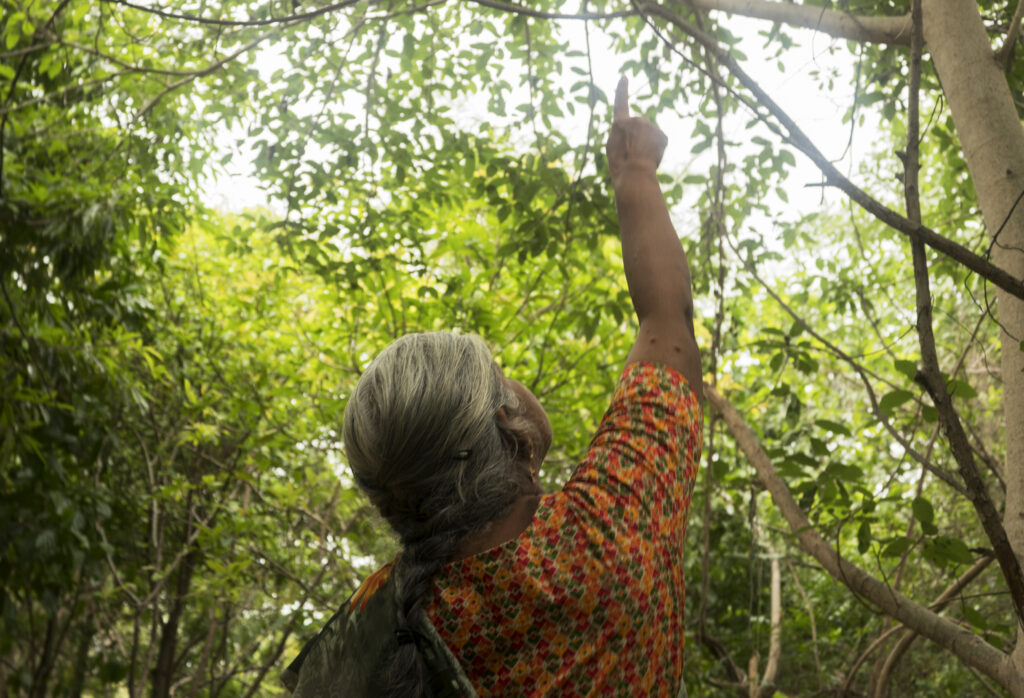
Since 2019, the central government has been pushing for natural farming techniques, with Bhartiya Prakritik Krishi Paddhti. In March this year, the Centre launched the National Mission on Natural Farming (NMNF) with a total outlay of Rs.2481 crore. The agriculture minister of Tamil Nadu, MRK Panneerselvam announced that Rs 12 crore was allocated to boost organic farming in 37 districts, and aid would be given to farmers to promote organic and natural farming products in government buildings like the Poomalai market complex, in Tirunelveli.
“But subsidies are credited only if the crops are raised on government rules, mostly tailored for traditional farming with paddy or commercial crops,” says Saroja.
Food forests are difficult to classify per government definition as forests, farms or even dryland horticulture. The oversight of the permaculture model falls between three departments – forest, horticulture and agriculture, said Diraviam Jayaraj, a senior scientist and head of ICAR – Krishi Vigyan Kendra in Karur.
“There is some ambiguity with food forests. It is a new concept and a self-sustaining model. The government has input-based subsidies, which promote an integrated farming system. But with food forests there are no clearcut guidelines,” he says.
For instance, with the Mission for Integrated Development of Horticulture – National Horticulture Mission, seedlings are distributed and incentives are given for cultivation of specific crops– like a subsidy of Rs. 16000 per hectare for marigold and jasmine or subsidies for adopting mechanisation.
Many have started their own food forests and organic farms in the district and even in neighbouring states after Nammalvar’s movement. Shobha Shivanna, a bank employee-turned-farmer from Karnataka is one of them.
Around eight years ago, Shobha started a food forest on a one-acre plot that belonged to her father, with tips and some seeds from Saroja and counsel from Tumur-based agriculturalist Subhash Palekar. She has now scaled it up to 3 acres that has avocado, coconut, drumstick, turmeric, and tubers. Her Marali Boomadilige Natural Farm has diversified crops, nourished by compost mixture.
Around 80% of the food her family of five consumes, she says, comes from this forest.
Shobha estimates investing around Rs 10-15 lakh over the years. “There was hardly any income in the first three years. But now we get around Rs 50,000 per month. Our expenses include Rs 20,000 for manpower, and another Rs 10,000 for transport of our goods,” she says. With natural farming, most mechanised processes are cut out, apart from deweeding machines, which costs Rs 5000.” That leaves her a monthly profit of around Rs 10,000- 15,000.
The key, she explains, is value addition, which involves selling allied products like moringa powder, lemon grass chutneys, and pickles, and papads. With a loyal customer base in Bangalore, she also sells fruits like bananas and avocado and mangoes. “My work does not end with harvest, it begins after that,” she says.
“But there’s a long way to go, a lot to learn to scale up to Saroja madam’s forest,” she says.
“In India, the concept of food forests need to be investigated, as there’s a lacuna in research and understanding on how to scale up,” says scientist Diraviam. “Its effect on soil fertility, the nutritional benefits, and benefits to the ecosystem needs to be quantified. And based on this, we need to design models which can provide short-term income and long term benefits.”
Saroja’s Organic Handbook
BehanBox has reported on how natural farming methods such as multi-cropping, and indigenous seeds are helping Gujarat’s women farmers find solutions to the climate crisis here. It has also reported on women’s collective action on forecasting drought here and on women protecting mangroves here.
Saroja’s forest yields unimaginable lessons on natural farming. Each visit yields new learning – crops with more sunlight have better yield, or peacocks enjoy ripe chilli crops. In September, this landscape is a temporary home for migratory butterflies and birds; this has allowed pollination to occur – the lemon trees and curry leaf plants appeared at random, not planned or planted.
“The forest is growing and I must grow with it,” she says.
In most farms, the kambili poochi or hairy caterpillar that leaves welts on the body, is seen as harmful. But in her forest, these black creatures are welcome. “They eat up entire leaves and flowers. That season, the crop’s yield will be low. But they are nature’s trimmers, the next season, the leaves, and stem branches grow in a fresh way. This is natural farming,” Saroja points out.
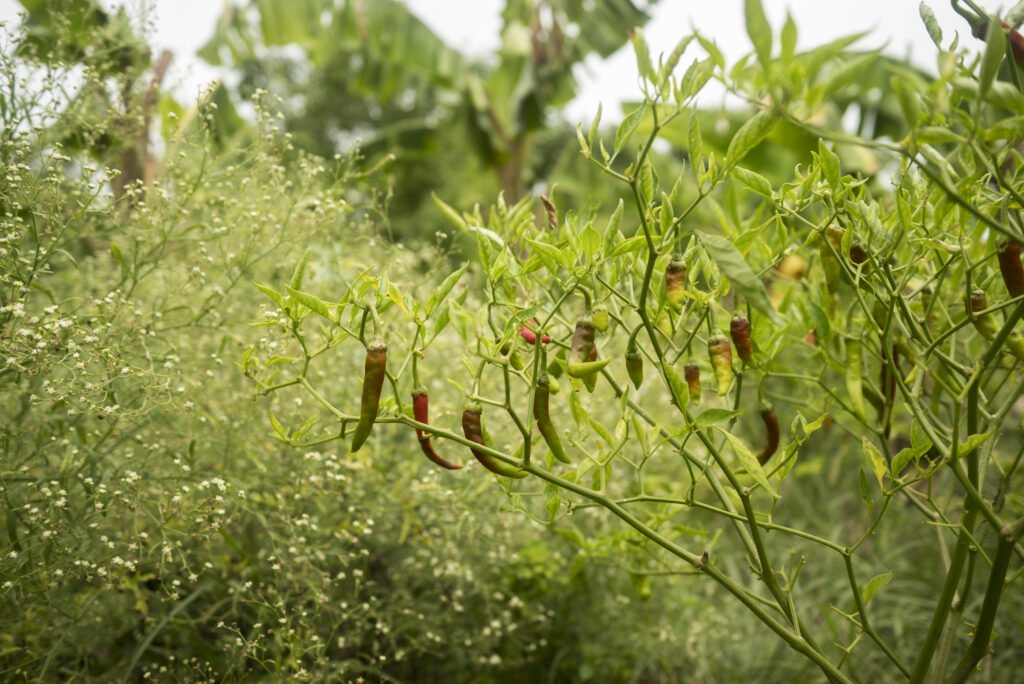
Across Kovilpatti and Chennai, Saroja recalls visiting temples for classes on hymns rich in the descriptions of landscape. For instance, in verse three of the Tiruppavai, there’s lyrical mention of pastoral lands, red paddy plants and swimming fish in the paddy waters. “It’s not just Bhakti literature, but there’s a lot of information about people, crops, their livelihoods, and their worlds. This inspired me, and I began thinking about why we don’t use moringa oil for medical purposes; it is now only being used as helicopter lubricant,”
Intellectual theft is common in this field. A few years ago, a woman from a neighbouring district proposed a tie-up with Saroja to sell moringa oil. “Later, she began selling her own oil without crediting my research or methods,” she says.
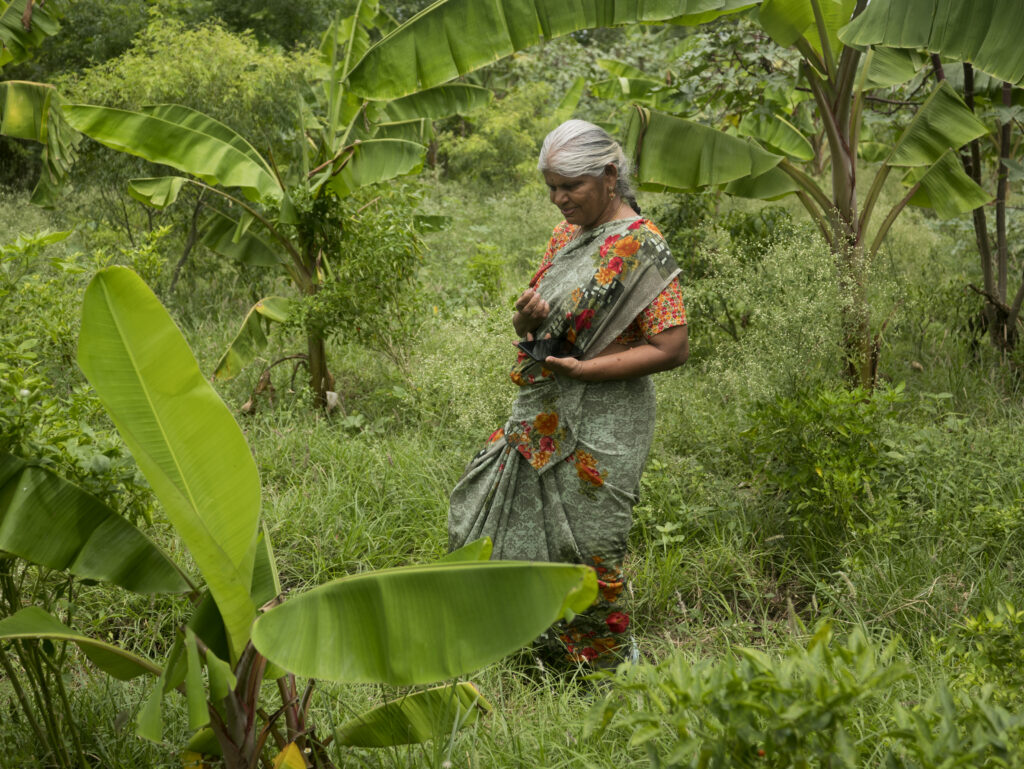
As for Saroja, her dream is to start a knowledge wellness programme to educate communities about the food forest model. “I want to share this knowledge with the world. Once my husband told me to restrict my farm to 50 cents. I made sure it’s reached our backyard,” she quips.
[This story is part of a new series “Climate Leaders: Women in Local Climate Action”, a collaboration between Womanity and Behanbox.]
All the stories in the series can be read here.
We believe everyone deserves equal access to accurate news. Support from our readers enables us to keep our journalism open and free for everyone, all over the world.

